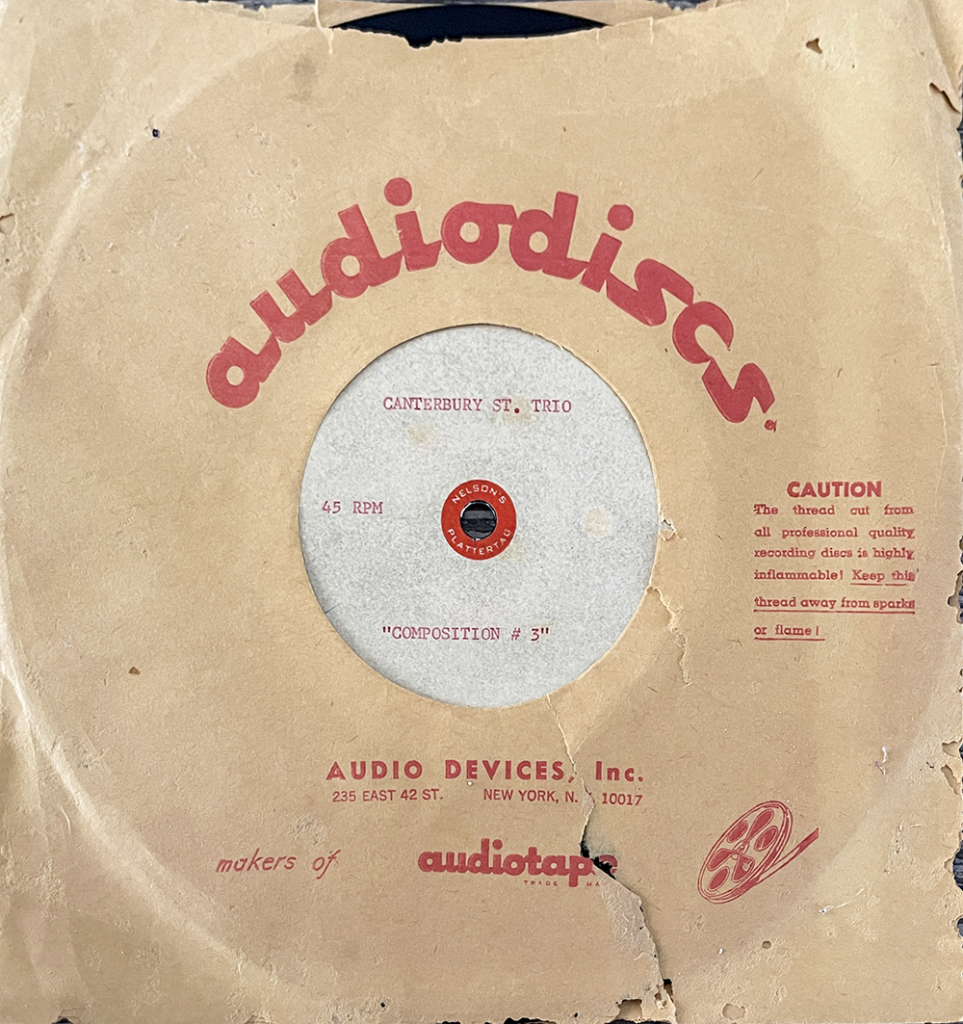Hello, oceanic audio enthusiasts and vinyl voyagers! Finnley here, your favorite finned finder of forgotten frequencies, tuning in from the vast deserts of Arizona to share a tale from my aquatic archives. On this particular escapade, we’ll be venturing back to a time when I frequented the balmy breezes and the palm-fringed coasts of Oahu.
In my quest for the sonic rarities nestled among the islands of Hawai’i, I found myself fin-deep in the local thrift shops, flicking through the familiar grooves of commercial island beats. Among the pulsing rhythms of Don Ho, the tropical tranquility of Martin Denny, and the warm vibrations of Arthur Lyman, there it was—a record that spoke of mystery even in its quiet appearance. Tucked away in its manila sleeve, the word “audiodiscs” printed on its face in a red that had softened with time, hinted at audio histories yet to be explored.
With the intuition of a true collector, I adopted this lonely record, its contents unknown, its stories untold. It lay dormant among my troves as the years passed and the tides of life carried me from the lush landscapes of Hawai’i to the rugged terrains of Arizona.
It wasn’t until the dust of my new desert home settled that this record—this time capsule of melody—came to light once again. And there, amidst the quiet of my surroundings, I placed the needle down, the record spinning, its hidden melodies finally free to fill the air after years of silence.
Let’s step back into a moment in time, to a world of sound etched on delicate surfaces, and uncover the narrative behind the disc I’ve chanced upon. Before we delve into the sounds it carries, it’s vital to appreciate the object itself—a blank record known as an “Audiodisc.”

The journey takes us to the bustling cityscape of mid-20th century New York, where at 235 East 42nd Street, a company named Audio Devices, Inc. had its roots deeply embedded. Far from just another name in the music industry, this establishment distinguished itself by producing “Audiodiscs”—blank, recordable discs designed for the audial craftsman eager to capture sound in its most tangible form.
These discs, often composed of a lacquer-coated aluminum core, served as a precursor to the vinyl records, we nostalgically recall today. They were instrumental for crafting “lacquers” or master discs that laid the foundation for pressing vinyl records, capturing everything from music to the spoken word with an authenticity that resonated with the era’s artistic ethos.
Yet, beyond the artistry, a practical caution was warranted. Each sleeve bore a stark reminder of the disc’s vulnerability—not just to the scratches and dust of time, but to the very elements themselves. A flammability warning cautioned handlers to keep the highly flammable thread cut from all professional quality discs away from sparks and flame—a testament to the volatile nature of creative mediums of the past.
In a twist of fate, the advance of magnetic tape and digital recording eventually nudged these direct-cut acetates into the shadows, their usage dwindling as technology offered new realms of possibility. Despite this, the legacy of the “Audiodisc” endures. It represents a time capsule of audio history, a snapshot of an era where the act of recording was as much an art as the sounds it preserved.
As I hold this disc—a memento from the analog past—I can’t help but marvel at the hands-on approach that gave birth to these grooves. Each rotation of the record beneath the stylus was a meticulous dance of creation, where sound was sculpted with precision and care. This disc isn’t just a vessel of sound; it’s a bridge to an era where music was a physical craft.
Delving into the essence of this “Audiodisc,” it whispers tales of its former life. It spun under the needle, probably as a demo, for a group known as the “Canterbury St. Trio.” With one side featuring a track titled “Canterbury St.” and the reverse offering “Composition # 3,” it seems to hold the essence of a folk genre, replete with straightforward melodies and raw, unrefined harmonies. Whether the less-than-tight harmonies were an artistic choice, or a happy accident remains a mystery locked within the vinyl.

My quest to uncover the story of the “Canterbury St. Trio” has led me down a path with more questions than answers. Searches through databases, newspaper archives, lyric analysis, and even the vigilant algorithms of YouTube have shed no light on the identity of these elusive artists. Starting with where I found the record and searching for any correlation the absence of any detectable link between “Hawaii,” “Canterbury,” and any known musical acts only deepens the enigma. “Canterbury St.” itself, a name so common yet so veiled in this context, offers no breadcrumbs to follow.
So now I turn to you, fellow audio adventurers, for assistance. The “Canterbury St. Trio” remains an enigma, their story untold. Were they a local favorite, hidden gems of their time? Is this record a lone survivor of their musical journey? If these questions stir your curiosity or if you hold a piece of this puzzle, I urge you to share your insights.
I extend my sincerest thanks for joining me on this auditory expedition at “Finnley’s Audio Adventures.” If this trek through the grooves of history has piqued your interest, be sure to subscribe to the accompanying YouTube channel and revisit this space for more explorations into the vast world of sound. Each record holds a story, and together, we may just uncover the lost symphonies of yesteryears.
